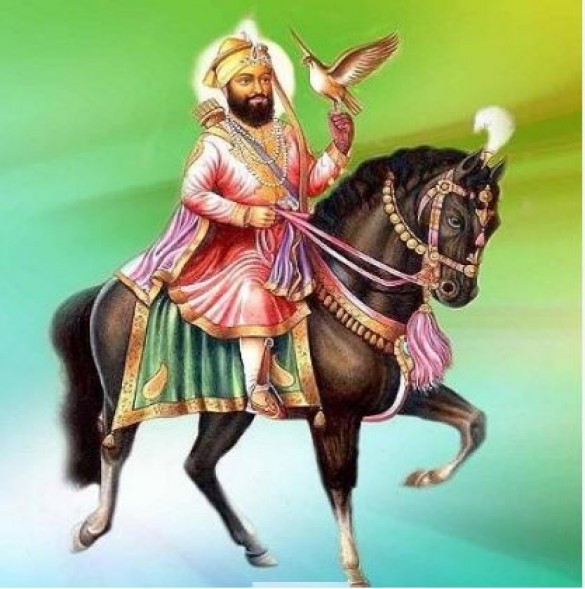
Early in 1675, a group of Kashmiri brahmins led by Pandit Kirpa Ram traveled to Anandpur to consult with Guru Tegh Bahadur after being driven insane by the religious fanaticism of the Mughals General Iftikar Khan (who had threatened them with being forced to convert to Islam). All Hindus were to be converted forcibly by Aurangzeb, who reasoned that if the revered Kashmiri Brahmans converted to Islam, then all Hindus in the nation would follow suit. They had been given six months to make a decision or face the repercussions. Time was of the essence!
Young Gobind Rai, who had arrived there with his playmates, questioned the Guru as he sat contemplating what to do. According to Kuir Singh's Gurbilas Patshahi 10 account, the father retorted, "Grave are the weights the earth carries. Only if a truly deserving individual steps up to lay down his head will she be saved. Happiness will then usher in and distress will be eliminated. Gobind Rai said innocently, "None could be worthier than you to make such a sacrifice.
Also Read: Guru Gobind Singh Ji : An Inspirational Person
Guru Tegh Bahadur advised the Brahmins to return to their village and tell the authorities that they would accept Islam if Guru Tegh Bahadur could first be persuaded to do so.
Soon after, the Guru traveled to Delhi, the imperial capital, with a small group of disciples. He, too, refused to accept Christianity after seeing the brutal executions of three of his disciples, and on November 11, 1675, he was decapitated. Before his father left Anandpur, the 13-year-old Gobind Rai was appointed as the new Guru. On the Baisakhi day in March 1676, he was formally installed as Guru Gobind Singh. He paid attention to the mastery of physical skills and literary achievement in the middle of his participation in the issues of the community. He had developed into a handsome young man who was active, lithe, and spare.
Also Read: Mata Gujri Ji: Great Sikh Woman
His early years were devoted meticulously to his pursuit of poetry because he was a natural poet with a writing genius. His only significant work in the Punjabi language, the Var Sri Bhagauti Ji Ki, also known as Chandi di Var, was composed in 1684. The Markandeya Purana's fabled battle between the gods and demons was portrayed in the poem. He chose a warlike topic for this and several of his later compositions, largely in Braj, like the two Chandi Charitras, to instill a sense of martial spirit in his followers and prepare them to resist oppression and injustice.
Also Read: Significance Of Nishan Sahib
Guru Gobind Singh spent the first 20 or so of his life in relative peace at Anandpur, where he trained in martial arts and other physical activities to finish his military training. A total of 52 poets were hired to translate the Hindu epics, and he also learned Persian and Sanskrit. The Punjabi language was used to convey tales of legendary figures to instill a spirit of combat among the Sikhs. During this time, the Guru also produced several compositions, including Jaap Sahib, Akal Ustat, and Sawayas. On the banks of the river Jamna in Paonta Sahib, he also built a Gurdwara.
Also Read: Khanda Sahib: Khalsa Insignia
Bhai Mani Singh Ji: Great Sikh Personality